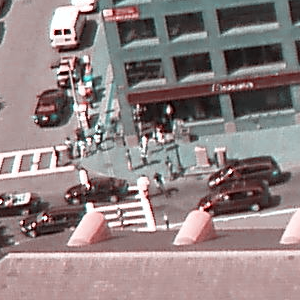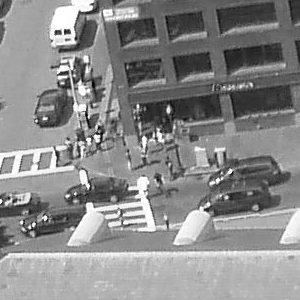ST_Band
Name
ST_Band — Returns one or more bands of an existing raster as a new raster. Useful for building new rasters from existing rasters.
Synopsis
raster
ST_Band
(
raster
rast
, integer[]
nbands = ARRAY[1]
)
;
raster
ST_Band
(
raster
rast
, integer
nband
)
;
raster
ST_Band
(
raster
rast
, text
nbands
, character
delimiter=,
)
;
Description
Returns one or more bands of an existing raster as a new raster. Useful for building new rasters from existing rasters or export of only selected bands of a raster or rearranging the order of bands in a raster. If no band is specified, band 1 is assumed. Used as a helper function in various functions such as for deleting a band.
![[Warning]](images/warning.png)
|
|
|
For the
|
Availability: 2.0.0
Examples
-- Make 2 new rasters: 1 containing band 1 of dummy, second containing band 2 of dummy and then reclassified as a 2BUI
SELECT ST_NumBands(rast1) As numb1, ST_BandPixelType(rast1) As pix1,
ST_NumBands(rast2) As numb2, ST_BandPixelType(rast2) As pix2
FROM (
SELECT ST_Band(rast) As rast1, ST_Reclass(ST_Band(rast,3), '100-200):1, [200-254:2', '2BUI') As rast2
FROM dummy_rast
WHERE rid = 2) As foo;
numb1 | pix1 | numb2 | pix2
-------+------+-------+------
1 | 8BUI | 1 | 2BUI
-- Return bands 2 and 3. Using array cast syntax
SELECT ST_NumBands(ST_Band(rast, '{2,3}'::int[])) As num_bands
FROM dummy_rast WHERE rid=2;
num_bands
----------
2
-- Return bands 2 and 3. Use array to define bands
SELECT ST_NumBands(ST_Band(rast, ARRAY[2,3])) As num_bands
FROM dummy_rast
WHERE rid=2;

original (column rast) |

dupe_band |

sing_band |
--Make a new raster with 2nd band of original and 1st band repeated twice, and another with just the third band SELECT rast, ST_Band(rast, ARRAY[2,1,1]) As dupe_band, ST_Band(rast, 3) As sing_band FROM samples.than_chunked WHERE rid=35;